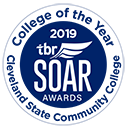Civil CAD Designer
Civil Drafters
17-3011.02
Median wages
$48,710
Prepare drawings and topographical and relief maps used in civil engineering projects, such as highways, bridges, pipelines, flood control projects, and water and sewerage control systems.
- Produce drawings, using computer-assisted drafting systems (CAD) or drafting machines, or by hand, using compasses, dividers, protractors, triangles and other drafting devices.

- Draw maps, diagrams, and profiles, using cross-sections and surveys, to represent elevations, topographical contours, subsurface formations and structures.

- Draft plans and detailed drawings for structures, installations, and construction projects, such as highways, sewage disposal systems, and dikes, working from sketches or notes.

- Determine the order of work and method of presentation, such as orthographic or isometric drawing.

- Finish and duplicate drawings and documentation packages according to required mediums and specifications for reproduction, using blueprinting, photography, or other duplicating methods.

- Review rough sketches, drawings, specifications, and other engineering data received from civil engineers to ensure that they conform to design concepts.

- Calculate excavation tonnage and prepare graphs and fill-hauling diagrams for use in earth-moving operations.

- Supervise and train other technologists, technicians and drafters.

- Correlate, interpret, and modify data obtained from topographical surveys, well logs, and geophysical prospecting reports.

- Determine quality, cost, strength, and quantity of required materials, and enter figures on materials lists.

- Locate and identify symbols on topographical surveys to denote geological and geophysical formations or oil field installations.

- Calculate weights, volumes, and stress factors and their implications for technical aspects of designs.

- Supervise or conduct field surveys, inspections, or technical investigations to obtain data required to revise construction drawings.

- Explain drawings to production or construction teams and provide adjustments as necessary.

- Computer aided design CAD software
 — Autodesk AutoCAD
— Autodesk AutoCAD  ; Autodesk AutoCAD Civil 3D
; Autodesk AutoCAD Civil 3D  ; Bentley Microstation
; Bentley Microstation  ; Piping and instrumentation design PID software
; Piping and instrumentation design PID software - Data base user interface and query software — ARCOM Masterspec; Microsoft Access


- Document management software — Adobe Systems Adobe Acrobat


- Enterprise application integration software — Extensible markup language XML


- Graphics or photo imaging software — Intergraph Image Analyst; Landscape modeling software; McNeel Rhino software; Microsoft Visio

- Map creation software — Boundary survey software; ESRI ArcGIS software
 ; Geomechanical design analysis GDA software; Topographic map software
; Geomechanical design analysis GDA software; Topographic map software - Materials requirements planning logistics and supply chain software — Bill of materials software

- Office suite software — Microsoft Office

- Optical character reader OCR or scanning software — Scanning software

- Presentation software — Microsoft PowerPoint


- Project management software — Microsoft Project
 ; SpecsInTact
; SpecsInTact
- Spreadsheet software — Microsoft Excel


- Word processing software — Microsoft Word; Specification software
- Active Listening — Giving full attention to what other people are saying, taking time to understand the points being made, asking questions as appropriate, and not interrupting at inappropriate times.

- Reading Comprehension — Understanding written sentences and paragraphs in work related documents.

- Critical Thinking — Using logic and reasoning to identify the strengths and weaknesses of alternative solutions, conclusions or approaches to problems.

- Mathematics — Using mathematics to solve problems.

- Speaking — Talking to others to convey information effectively.

- Writing — Communicating effectively in writing as appropriate for the needs of the audience.

- Active Learning — Understanding the implications of new information for both current and future problem-solving and decision-making.

- Complex Problem Solving — Identifying complex problems and reviewing related information to develop and evaluate options and implement solutions.

- Coordination — Adjusting actions in relation to others' actions.

- Operations Analysis — Analyzing needs and product requirements to create a design.

- Time Management — Managing one's own time and the time of others.

- Monitoring — Monitoring/Assessing performance of yourself, other individuals, or organizations to make improvements or take corrective action.










